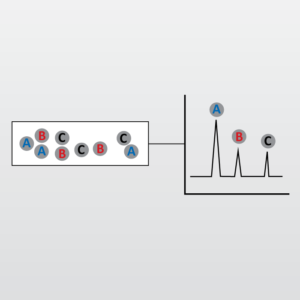Ultra High Performance Liquid Chromatography (UHPLC)
Home » Ultra High Performance Liquid Chromatography (UHPLC)
UHPLC, Ultra-High-Performance Liquid Chromatography is similar to HPLC, in that it is a technique used to separate different constituents of a compound. Used predominately to identify, quantify and separate components of a mixture by using high pressure to push solvents through the column. In UHPLC, particle sizes less than 2um can be used, providing better separation than HPLC where particle size is limited to 5um. These smaller particles require higher pump pressures (100MPa vs.40 MPa, making this technique very efficient with fast analysis and higher resolution.
Ideal Uses
- Biochemistry for the analysis of constituents of a compound.
- Separation and identification of amino acids, nucleic acids, proteins, hydrocarbons, pesticides, carbohydrates, antibiotics, steroids and countless other inorganic substances.
- Quantitation of analytes present
- Sample purity determination
- Quality assurance and control

Strengths
- Smaller particle size
- Faster analysis
- Higher resolution
Limitations
- Cannot separate inorganic ions or polysaccharides
- Lack of an ideal universal detector
- Aggressive non-polar solvents are not compatible with the instrument
Technical Specifications
- Pump pressure – up to 100 MPa
- Pump flow rate – 0.05 to 8.0 mL/min
- Injection volume – 1 to 100 uL
- Column compartment temperature – 5 to 110 °C
- Column particle size – less than 2 um
- Detection
- UV/VIS, 190 to 800 nm
- Fluorescence
Would you like to learn more about Ultra High Performance Liquid Chromatography?
Contact us today for your Ultra High Performance Liquid Chromatography (UHPLC) needs. Please complete the form below to have an EAG expert contact you.